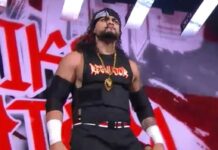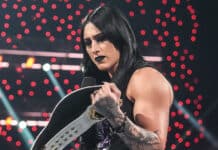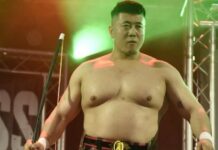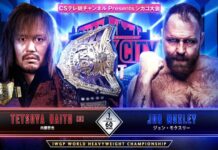As we’ve seen in the past three years since the launch of All Elite Wrestling, more new talent hit national television within that time frame than in the decade or so previously. One of the true cornerstones of building a promotion is assembling the roster and just as important, establishing a brand identity. Those two concepts aren’t automatically linked, either. TNA put together an incredible roster, especially after a few years on Spike TV, but never established a brand for itself, which was one of the many reasons it eventually failed. Samoa Joe, AJ Styles, Abyss, Sting, Ric Flair, Mick Foley, Kurt Angle, Bully Ray, Rob Van Dam, Alex Shelley, Jay Lethal, and many others decorated a roster that had considerable depth, but the sum total of much of TNA’s existence was WWE-lite.
AEW has, both positivity and negatively, established a brand identity for itself as the pro wrestling company in the United States, which provides a contrast to the sports entertainment approach by the WWE, and there’s nothing wrong with that. In truth, that’s probably the best path to take because nobody is going to have the production value or the historic context of the WWE brand so taking things outside of the corporate box so to speak is a way to present something unique at the national level. That said, the balancing act is still attempting to draw the causal fan and main stream demographic as much as possible, which is key for success on a national level. The prime example being the upcoming New Japan/AEW pay-per-view in June, and more specifically, how All Elite markets the talent to an American audience. Yes, this is a dream match show for the diehard fans that are already familiar with the Japanese league, but there’s a large portion of the TBS audience that might not know much about New Japan so the way that the concept is presented on television is very important for a successful pay-per-view buy rate.
Speaking of presenting talent on television, after the recent departures of some of the original wrestlers signed to All Elite contracts, a few more have confirmed their exit from the promotion. Unfortunately, because of the jaded nature of wrestling fans and social media in general, it’s important to mention that the discussion about a talent’s lack of ability to get over on a national platform isn’t a personal jab at them. Sometimes, it’s a matter of timing or circumstances that prevents a competitor from solidifying themselves in a promotion. Other times, it might be a lack of skill, but that isn’t always a correct assumption.
Joey Janela, who achieved cult status on the independent scene years ago after he was literally thrown off the roof of a two-story building by John Zandig, parlayed his work in Game Changer Wrestling over the years into an All Elite contract. For whatever reason, Janela’s persona just didn’t get over on a national scale, but he didn’t necessarily get much television exposure either, which is a combination of the bloated roster and the booking plans for the company. Under different circumstances, it’s possible that Janela’s act might’ve captured the same wave of momentum he had on the indy circuit, similar to the way Orange Cassidy took his character from small shows to national TV. However, it just didn’t happen for Janela and he was eventually typecast into more of a hardcore role based on his GCW association, even though he’s not necessarily a death match wrestler. Essentially, his indy style didn’t work on TNT and he was regulated to the Youtube shows. There were rumors online that Janela had heat backstage, but most of that speculation has to be taken with a grain of salt. Either way, Game Changer Wrestling is still the most notable independent group in America so Janela will still have a decent platform after his AEW contract expires.
Another grappler known for his time in GCW was Marko Stunt, the smaller wrestler that also had a cult following from the indy scene. The fiery underdog made an impression on fans because the effort was always there. That said, Marko probably wasn’t ready for national TV, and the visual of his smaller size didn’t necessarily do him any favors either. Granted, the criticism of this was probably too harsh at the time, and Chris Jericho, who wanted to defend Stunt online, made some comparisons to Rey Mysterio Jr. early in his career, but that didn’t really help matters either. There’s only one Rey and he got over because of his incredible skill, a cool look, and unique charisma. I’m not sure Marko had the skill set to overcome the visual of trading moves with The Lucha Brothers on television, which isn’t a knock against him because it would be a tough situation for any smaller wrestler. Similar to Janela, I think Marko can get consistent work on the indy scene after his contract expires, which will be better for his career anyway because he hasn’t been featured on AEW TV in several months.
Jack Evans, who suffered some injuries during his All Elite tenure, announced that he would not get his contract renewed, and went as far as to say that his performances weren’t were he wanted them to be during most of his time under the Khan-owned banner. Evans was ahead of his time in many ways with some of the insane aerial maneuvers, but wasn’t exactly the most polished, and that was fine when he was one of the very few that worked that style 15 years ago. Quite frankly, at 40, Jack Evans isn’t going to be the same high flyers he was during the early ROH years and a number of younger stars with more precision to their performances have surpassed him as an athlete. A combination of that and the injuries made it difficult for him to find his place on the All Elite roster. If AEW existed when Jack Evans was ten years younger this might be a different conversation, but he’s a secondary wrestler in 2022. That said, Evans worked extensively for AAA earlier in his career so I wouldn’t be surprised if he returned to working full-time in Mexico.
On the other end of the spectrum, Kushida made his exit from WWE and all things considered, he did the best he could there. Unfortunately, this is the same story we’ve seen with a lot of the cruiser weight talent, they aren’t a priority for management and thus get lost in the shuffle. Hopefully, Kushida made the best money of his career for the three-year run he had under WWE contract because he simply wasn’t given the opportunity to do anything else. Kushida has the talent to be an asset for any major promotion, which is why it’s not surprise that he’s already set to return to New Japan. His lack of success in America has nothing to do with his ability, but rather another example that the office will always view the WWE as a big man promotion. The vast majority of his run, Kushida was booked for 205 Live, which offers less exposure than the witness protection program. At 38, he has at least a few more years left in his career and it’s good that he will be able to showcase his skills in New Japan again.
What do you think? Comment below with your thoughts, opinions, feedback and anything else that was raised.
Until next week
-Jim LaMotta
E mail [email protected] | You can follow me on Twitter @jimlamotta







